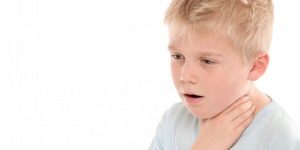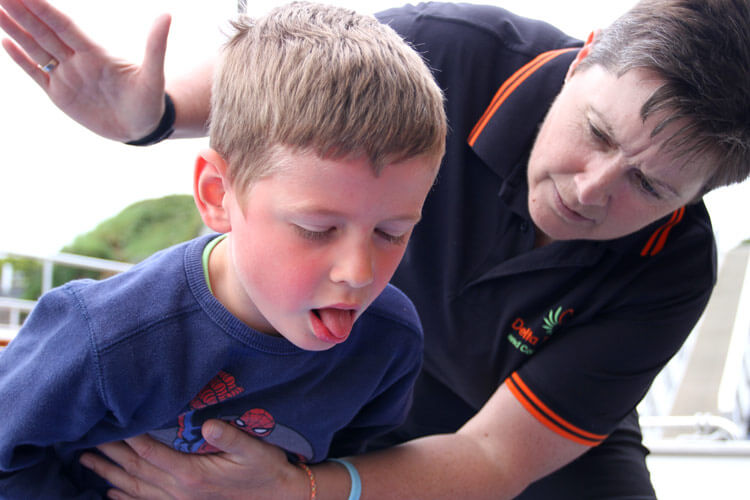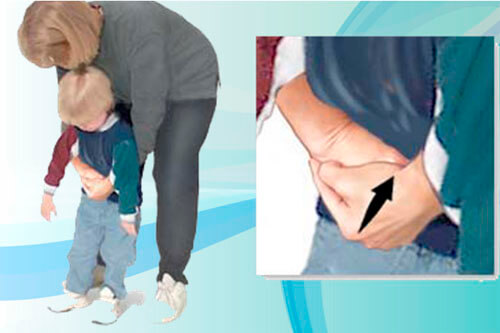How to Treat Choking in Children

Choking in children isn’t a problem that only puts babies at risk. During their growth, and even long after the weaning stage is completed, children tend to put their hands and other objects in their mouths and noses. These actions can possibly lead to suffocation.
If your son sticks a marble up his nose or swallows a coin, you must understand that this is part of a normal phase while learning and exploring the world around him.
However, it’s important to make sure that your children understand the danger they could put themselves in if they put certain things in their mouth or nose.
We should also emphasize the difference between choking in children and other causes of suffocation, the latter being due to things like:
- Inflammation of the trachea muscles (due to allergies)
- Accidentally consuming toxic substances
- Reflux or vomiting (while unconscious)
- Insect bites
Based on this, and for each particular case, certain measures should be taken to restore your child’s oxygen flow.
Common causes of choking in children
Choking is defined as the obstruction of the trachea by a solid or malleable object (toys, balloons, paper, coins, chewing gum, small sweets and other types of food), but with enough density to get stuck in the trachea, preventing total or partial air flow.
When a child is choking with all oxygen completely cut off, there is a maximum of 4 minutes to clear the obstruction before the child likely dies of asphyxia.

How to prevent choking in children
To a greater degree, children that are at an age close to weaning will require more attention to avoid choking.
Therefore, it’s important to teach them to not drink more than they can ingest. This way, they’ll understand (when drinking their bottle or juice, for example) how far they can go and why it’s important to eat and drink little by little.
Babies and children under one year old usually rush to drink and this often causes choking.
During the first years of life, the evolution of children should be monitored regarding the consumption of solid goods to know which foods should be consumed under supervision and which should not.
Normally, children between 3 and 5 years old suffer the most from choking episodes caused by small toys, like trying to eat coins or other objects.
Therefore, it’s necessary to monitor their play sessions, especially if your child tends to try to eat their toys or if the toys are small enough that they could swallow them.
On the other hand, they could also choke completely by accident. Basically, that happens due to choking on food or medication, which occurs because they haven’t yet completely learned how to eat properly (chewing and swallowing food).

How to act when a child is choking
Keep calm
During these situations, it’s essential to keep calm so that you can apply the measures correctly and not waste your time.
In addition, responding with panic to this situation can make your child panic, which will increase how much oxygen they need and therefore reduce the window of time you have to act on the problem.
Give strong slaps on the back
It’s simple enough, easy to do, and a very quick solution to help a choking child.
Manually remove the object of obstruction
If the object is visible in the child’s mouth, try using fingers or tweezers (if you can quickly access them) to try to remove the object that obstructs breathing.
Heimlich maneauver
This is a simple technique that you should use for children that are severely choking. It consists of wrapping your arms around the individual who is choking from behind, clasping your hands together between their sternum and navel.
After you get into this position, pulse this area in the direction of their stomach. The idea behind this technique is to use the stomach pressure as a means of pumping so that the sudden pressure will shoot air in the direction of their trachea. This pushes the object and stops it from obstructing the airflow.
State of unconsciousness
If you see that the child is unconscious, it’s recommended to perform the Heimlich maneuver as we described immediately.
If you’ve managed to remove the object that obstructed breathing but the child remains or has fallen unconscious during the event, listen to their nose and mouth to check if they’re breathing.
In the case that they aren’t, it will be necessary to apply mouth-to-mouth breathing and compressions to their chest to try to resuscitate the child.
After giving first aid, call an ambulance immediately so they can handle the situation and stabilize the child completely.
All cited sources were thoroughly reviewed by our team to ensure their quality, reliability, currency, and validity. The bibliography of this article was considered reliable and of academic or scientific accuracy.
- DeGeorge KC, Neltner CE, Neltner BT. Prevention of Unintentional Childhood Injury. Am Fam Physician. 2020 Oct 1;102(7):411-417.
- Hitosugi T, Tsukamoto M, Hirokawa J, Yokoyama T. In dental office, supine abdominal thrust is recommended as an effective relief for asphyxia due to aspiration. Am J Emerg Med. 2018 Jul;36(7):1301.
This text is provided for informational purposes only and does not replace consultation with a professional. If in doubt, consult your specialist.








